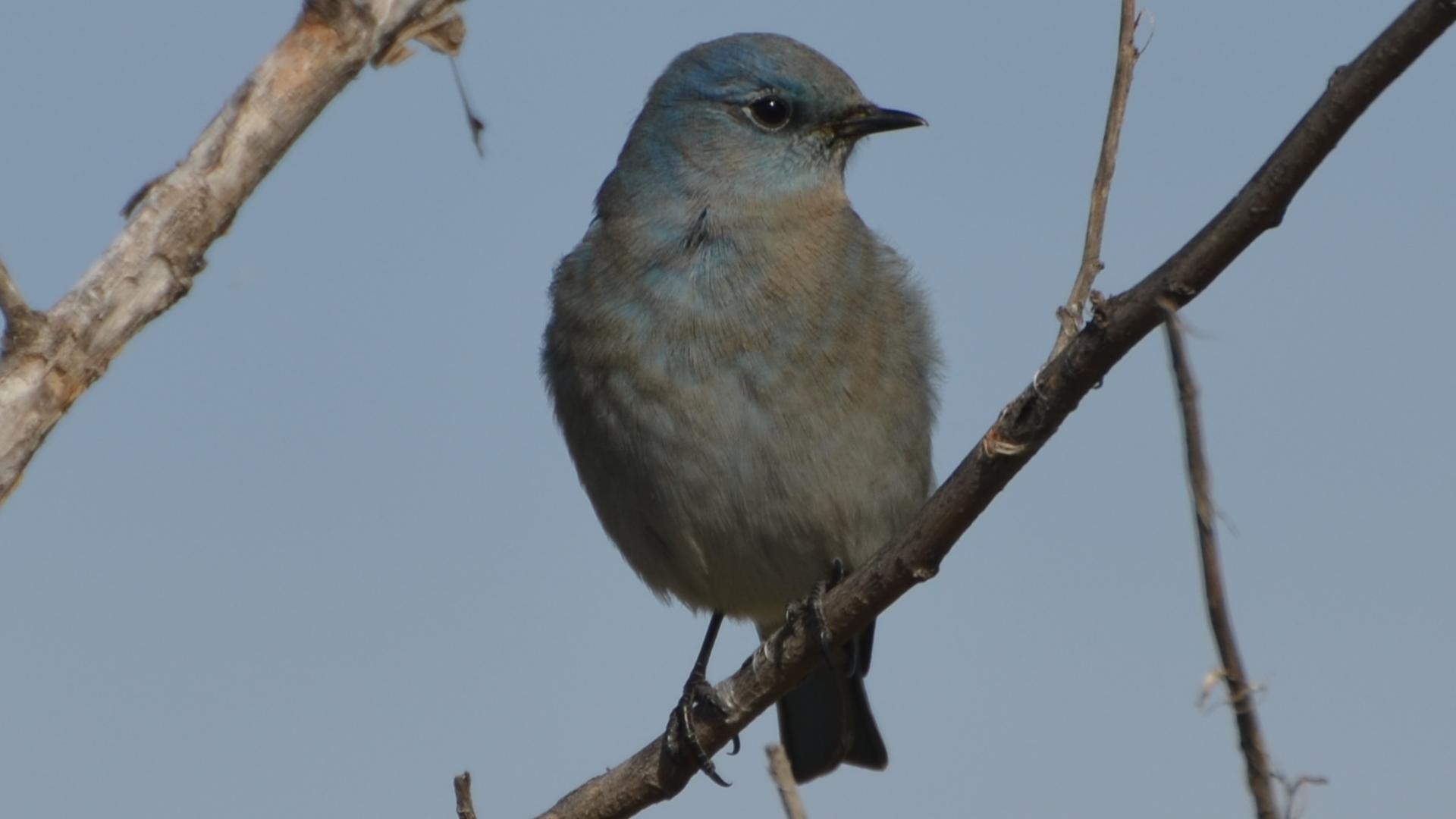Mountain Bluebird
A species of Bluebirds, Also known as Ultramarine Bluebird Scientific name : Sialia currucoides Genus : Bluebirds
Mountain Bluebird, A species of Bluebirds
Also known as:
Ultramarine Bluebird
Botanical name: Sialia currucoides
Genus: Bluebirds
Content
Description People often ask General Info
 Photo By Andy Reago & Chrissy McClarren , used under CC-BY-2.0 /Cropped and compressed from original
Photo By Andy Reago & Chrissy McClarren , used under CC-BY-2.0 /Cropped and compressed from original Description
The mountain Bluebird is a sight to behold, with its brilliant blue feathers. Singing sweetly, it is a common sight in fields, meadows, and forests across its range. It's not just pretty, though - the Mountain Bluebird is a vital part of the ecosystem, snacking on insects and other small creatures. This bird usually nests in tree cavities or other cavities, with a preference for open habitats with scattered trees and shrubs. 
Size
18-18 cm (7-7.25 in)
Colors
Brown
Black
Bronze
Gray
Blue
Life Expectancy
6-10 years
Nest Placement
Cavity
Clutch Size
4 - 8 eggs
Incubation Period
1 - 2 broods
Nestling Period
18 - 21 days
Feeding Habits
Mountain Bluebird predominantly consume insects like beetles, grasshoppers, caterpillars, and spiders, with an increased insect diet during breeding. Winter food includes fruits and seeds from plants such as grapes, elderberries, and sumac, plus available insects. They exhibit both hovering and perching hunting behaviors, and forage in flocks for grasshoppers. Mountain Bluebird also visit feeders for mealworms, berries, and peanuts.
Habitat
Mountain Bluebird primarily inhabit open terrain with sparse trees, thriving in areas such as meadows, prairies, and edges of forests at elevations up to 12,500 feet. These birds prefer habitats with a blend of short grasses, shrubs, and trees, including sagebrush flats, alpine zones, pastures, and regions affected by fires or logging. For nesting, mountain Bluebird use natural cavities or nest boxes, especially those not facing roads. During winter, they descend to lower altitudes, favoring open grasslands with occasional trees, woodlands, and agricultural fields, while typically avoiding extremely arid deserts.
Nest Behavior
Males suggest potential nest sites while females make the final choice. Mountain Bluebird begins nest building with females constructing the insulated nest alone, often in the morning over several days to a week. Egg-laying follows, with both parents involved in care. They may reuse and add to nests in subsequent seasons.
Nest Characteristics
Mountain Bluebird typically nests in cavities, including natural knotholes and rock fissures, preferably in dry areas of open grasslands, and sometimes on cliffs and buildings. Nests are located up to 3 feet above ground with entrances positioned away from incoming weather. They fill cavities with dry grass and vegetation, forming a snug cup lined with fine materials or feathers.
Dite type
Insectivorous
People often ask
General Info
Feeding Habits
Bird food type
Bird Feeder Type

Platform

Small Hopper
Behavior
Mountain Bluebird exhibit a variety of foraging techniques, such as perching and swooping down to catch prey, as well as adept on-wing maneuvers that include hovering and hawking insects mid-flight, reminiscent of kestrels. These aerial methods are energetically costly and are employed mainly when sustenance is less abundant. During courtship, males serenade near chosen nest sites to woo females, engaging in conspicuous back-and-forth flights between the nest and the female. Nesting females display intense dedication, allowing close human observance. Post-breeding season, mountain Bluebird form flocks comprising family units and solitary adults, which may undertake extensive but temporary forays away from their nesting areas before entirely vacating their breeding territories.
Distribution Area
Their breeding habitat is open country across western North America, including mountainous areas, as far north as Alaska. Although mountain bluebirds can be found in some states year-round, their range is expansive -- they generally migrate south to Mexico in the winter and north into western Canada and even Alaska in the summer. Depending on the time of year, they may be ubiquitous in mountain environments like grasslands or landscapes of sagebrush, where trees and shrubs are fairly spread out. 
Species Status
Mountain Bluebirds are fairly common, but populations declined by about 26% between 1966 and 2014, according to the North American Breeding Bird Survey. Partners in Flight estimates the global breeding population of 4.6 million, with 80% spending some part of the year in the U.S., 20% breeding in Canada, and 31% wintering in Mexico. The species rates an 8 out of 20 on the Continental Concern Score. Mountain Bluebird is a U.S.-Canada Stewardship species, and is not on the 2014 State of the Birds Watch List. These bluebirds benefited from the westward spread of logging and grazing in the late nineteenth and early twentieth centuries, when the clearing of forest created open habitat for foraging. The subsequent waning of these industries, coupled with the deliberate suppression of wildfires, led to a dwindling of open acreage in the West and the decline of the species. More recently, as land-use practices have stabilized, so have Mountain Bluebird populations. Construction of nest boxes in suitable habitat has also provided a population boost. Populations are declining in areas where trees are too small to provide natural nesting cavities, and where forest and agricultural management practices have reduced the availability of suitable nest sites. Among birds that nest in cavities but can't excavate them on their own, competition is high for nest sites. Mountain, Western, and more recently Eastern bluebirds compete for nest boxes where their ranges overlap. House Sparrows, European Starlings, and House Wrens also compete fiercely with bluebirds for nest cavities. 

 Photo By Andy Reago & Chrissy McClarren , used under CC-BY-2.0 /Cropped and compressed from original
Photo By Andy Reago & Chrissy McClarren , used under CC-BY-2.0 /Cropped and compressed from original Scientific Classification
Phylum
Chordates Class
Birds Order
Perching birds Family
Thrushes Genus
Bluebirds Species
Mountain Bluebird